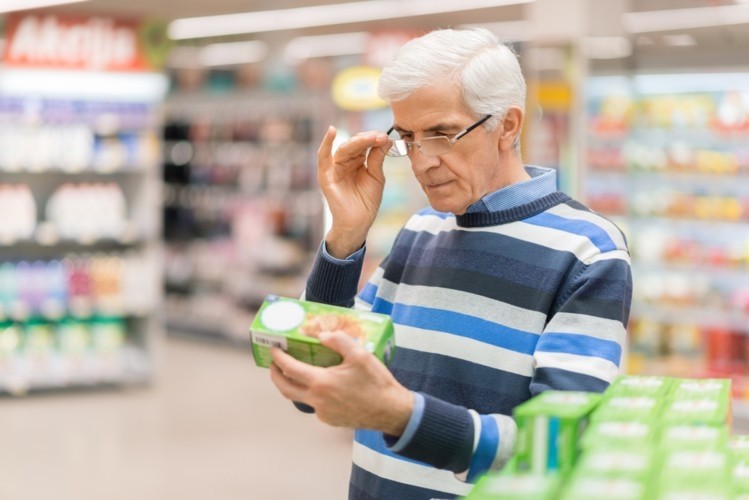Pure Market tests brands for plasticizers, pesticides, heavy metals: 'We know consumers are concerned about them'

The rating system is not very transparent - Pure Market (strapline: ‘You deserve to know’) publishes its blinded data but does not go into any detail on its website about how its algorithms use that data to grade products on things like 'nutrition' or 'efficacy' (also part of its ratings system).
However, its testing - which highlights a "significant gradient between the top and bottom performing products" - can help manufacturers see how they stack up vs competitors in areas they may not have been paying much attention to, such as pesticide residues, says the Denver-based firm.
Pure Market - which operates a 4,000 square-feet ISO- 17025 accredited testing laboratory equipped with Inductively-Coupled Plasma Mass Spectrometry (ICP-MS), Liquid Chromatography Tandem Mass Spectroscopy (LC-MS-MS), and Gas Chromatography Mass Spectroscopy (GC-MS) - tests CPG products for up to 400 attributes including industrial and environmental contaminants, pollutants, heavy metals and pesticide residues; nutrition; efficacy; and label claim accuracy.
It then rates them on a scale of A-F, benchmarking items vs products in the same category.
Products graded at a B- or above will be available for sale on the site, beginning with a select number of graded products but ultimately extending to “categories including baby, food and beverage, household cleaning, health and fitness, personal care and pet food.”
FoodNavigator-USA (FNU) caught up with Sunny Kapoor (SK), SVP of digital product management, and Tyler D'Spain (TDS), lab director, to learn more...
FNU: Are food and beverage brands routinely testing for the things you are testing for, from heavy metals and pesticide residues to industrial contaminants? Should they?
TDS: We believe that the CPG industry should absolutely be testing for these contaminants. Unfortunately, most brands we speak to are not routinely testing for these contaminants. E.coli, salmonella, listeria, yes. Heavy metals, pesticide residues, and plasticizers, rarely.
FNU: We’ve all heard the phrase, the dose is the poison. Should we be worried about trace levels of pesticide residue or cadmium?
SK: Overall, we want to avoid and minimize our exposure to potentially harmful industrial and environmental contaminants, toxins, and chemicals of concern and regulations for many of these contaminants don’t exist. Whether the recent report on levels of heavy metals in baby food, or the journal article published in Nature that not only are neonicotinoids affecting pollinators, but also insects and fish, we have a very real reason to be concerned about the accumulation of these things in the environment and in our bodies.
FNU: Isn’t your rating system a bit of a black box? And how should consumers interpret the grades? Is there a meaningful difference between products awarded A vs F on ‘purity’?
SK: We compare the results of similar products so you can see how they stack up. In many categories, there is a significant gradient between the top and bottom performing products. It ultimately comes down to that we believe that consumers have a right to know what’s in their food. Our intention is to empower consumers to make informed decisions when purchasing products for their families.
TDS: We aim to make it as simple as possible for consumers to understand the science behind the testing, which is why we boil it down to gradings and ratings. Since we test for over 400 attributes per product, it’s a lot to dig through. You can click on the individual product rating for more details on the test results.
We leave it to government to do the enforcement. Pure Market does rating and benchmarking. If you are in the market for an applesauce, and you want one that is certified organic and tests well for heavy metals, pesticide residues, and plasticizers, Pure Market can help a consumer differentiate between marketing and product that tests well based on data and science.
FNU: How transparent is your ratings system to consumers and companies?
TDS: The product ratings come from the results of analytical chemistry testing and benchmarking. The raw data is also posted on the website. Each product selected for a Pure Market rating is sampled and tested for as many as 400 different attributes. This can include attributes like purity, which refers to industrial and environmental contaminants, pollutants, and chemicals like heavy metals and pesticide residues. Nutrition is another factor. Our nutrition score is unique for each product category since we can’t compare peanut butter to household cleaning items. We also test for efficacy, which factors in if a product works and if it delivers on its labeled promise. Finally, we test for label accuracy which refers to the product contents being consistent with the label claim. This can refer to attributes like product potency and actual protein content. A good example of this is, does the product contain the amount of CBD it claims to have on the label?
Once the testing is complete, we compare the results to similarly formulated products within the same category to benchmark them. The final product rating and lab grade that you see is a blend of test results and benchmarking. A high purity score means that the product has low levels of potentially harmful substances. A high nutrition score means it has more of the good stuff such as antioxidants and low/no added sugar -- this changes per category. A high label accuracy score means that the actual product contents are consistent with the label claim -- if a product says it’s ‘paraben-free,’ then is it actually?
FNU: To what extent does Pure Market factor in thresholds set by government agencies such as the EPA or safe harbor limits established by state regulations such as California’s Prop 65?
TDS: Where standards exist, we use them. Pure Market takes inspiration from international, federal, and state regulations (like the World Health Organization, the FDA, and the California Office of Environmental Health Hazard Assessment). The FDA and the EPA have some standards for contaminants, for example, maximum pesticide tolerance levels. However, regulations for many other contaminants, like potentially harmful industrial and environmental contaminants, toxins, and chemicals of concern, don’t exist.
FNU: How actionable is your data?
SK: Our goal is to level set the industry and bring awareness to potentially harmful ingredients that are landing in our products that can be avoidable and minimized. We seek to provide ingredient transparency to consumer products that will encourage manufacturers to significantly improve their product offerings.
FNU: Clean label used to mean avoiding anything ‘artificial’ on your ingredients list. Are consumers now looking beyond this?
SK: Clean simple ingredients are only as good as the agricultural systems in which they were derived. Heavy metals and pesticides residues would never be found on an ingredient list, because they aren’t added as ingredients, but we know that consumers are concerned about them. The onus is on brands to deliver on consumer expectations of quality and purity.
FNU: How is Pure Market funded? Hasn’t it cost a fortune to test thousands of products for hundreds of different attributes?
SK: Pure Market is funded by a mix of private equity and advertising that helps fund our testing for over 3,000 products across 18 categories.
FNU: What is the logistics set up at Pure Market for the e-commerce side of your operation?
SK: Currently, for a limited number of products, we have the ability to fulfill directly through drop shipment. In addition, we work with our clients to fulfill products from their warehouses. Over time we will significantly increase the product offering of what we are able to ship directly as we add clients to the platform and roll out additional categories.











